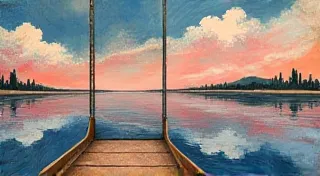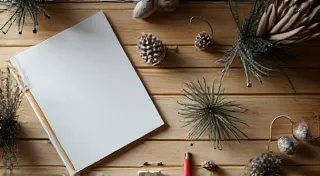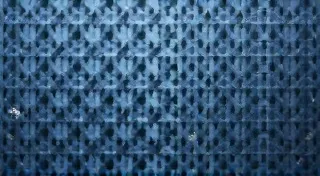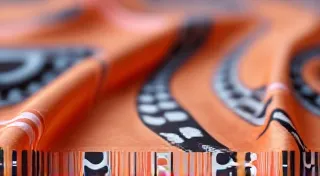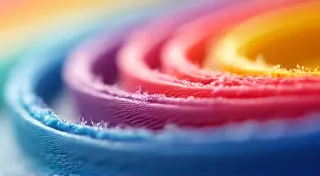Ekri Paper Marbling: The Turkish Delight of Floating Colors
Paper marbling is a captivating art form, a dance between water, pigments, and paper that results in unique, swirling designs. While numerous marbling techniques exist worldwide, each with its own history and beauty, Ekri holds a particularly special place. Originating from Turkey, Ekri translates to “brushstroke” and beautifully encapsulates the technique’s distinctive character. This article will delve into the art of Ekri paper marbling, guiding you through the process and revealing why it’s a beloved craft.
What is Ekri Paper Marbling?
Unlike other marbling techniques that often rely on dispersing pigments directly into water, Ekri uses a thickened paint, or "keçili boya". This thickened paint, traditionally made with tragacanth gum, is applied directly to the marbling bath (a viscous liquid, typically carrageenan) using brushes. The thickened nature allows the paint to hold its shape briefly on the surface of the bath, creating bold, brushstroke-like patterns before they are transferred to the paper. These patterns are far more distinct and defined than those often seen in other methods.
The result is a rich, textured appearance, often featuring strong, clear brushstrokes and a striking visual impact. Ekri allows for a controlled application of color, allowing the artist more freedom in designing intricate patterns, incorporating motifs, and achieving a highly personalized aesthetic.
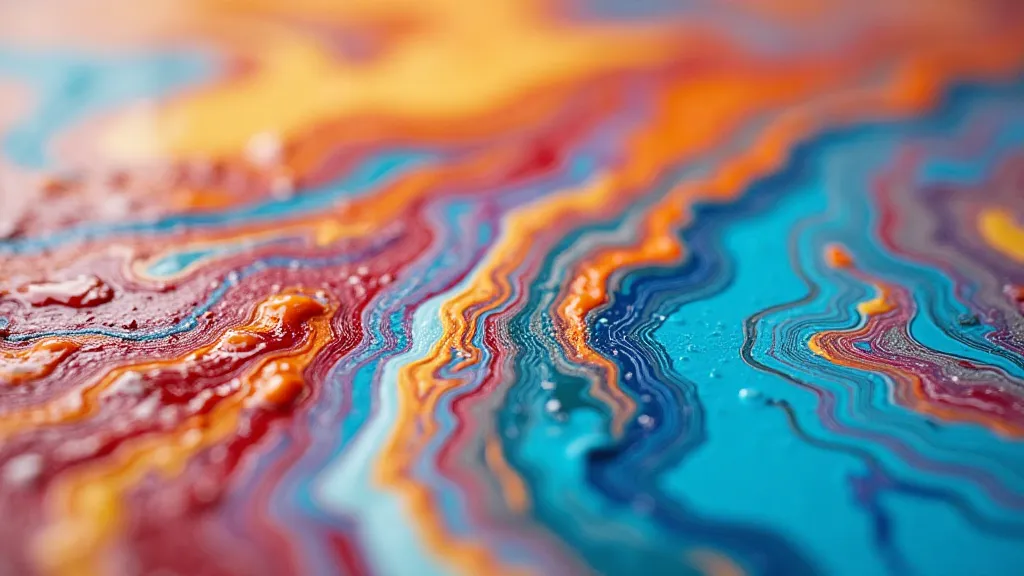
Materials You'll Need
While the core concepts remain the same, the specific materials for Ekri differ from other paper marbling methods. Here's a breakdown:
- Carrageenan Bath: The foundation of your marbling experience. Carrageenan powder is dissolved in water to create a viscous, gel-like bath.
- Tragacanth Gum: Essential for thickening the paints. Alternatives like locust bean gum *can* be used, but tragacanth is generally considered the gold standard for achieving the correct consistency.
- Pigments: Acrylic paints, liquid watercolors, or specialized marbling pigments can all be used. Experiment to find what suits your artistic vision.
- Brushes: Various sizes and shapes of brushes are needed. Natural bristle brushes tend to work best.
- Paper: Sizing is *crucial*. Unsized paper will absorb the colors and result in muddy, indistinct patterns. Sizing can be applied beforehand or use commercially pre-sized paper.
- Large Tray or Basin: To hold the marbling bath.
- Sponge or Cloth: To clean the brushes.
- Gloves: To protect your hands.
Step-by-Step Guide to Ekri Paper Marbling
- Prepare the Carrageenan Bath: Follow the instructions on your carrageenan powder to create the bath. Allow it to fully hydrate, which can take several hours. A proper consistency is thick enough to support the paint but thin enough to allow the paper to be easily submerged.
- Prepare the Paints: This is where the magic happens. Mix your pigment with tragacanth gum, gradually adding the gum until the paint reaches a toothpaste-like consistency. The consistency is vital; too thin, and the brushstrokes will disappear; too thick, and they will be lumpy and difficult to apply.
- Test Your Paints: Before applying to your paper, test a small amount of each paint on the surface of the bath to ensure the consistency is correct.
- Apply the Paints: Dip a brush into one of your prepared paints and apply it to the surface of the bath. Use a variety of brushstrokes – short, long, dabbing, swirling – to create your design. Work quickly, as the paint will begin to dissolve into the bath.
- Layer the Colors: Continue applying different colors, layering them strategically to create depth and complexity. Consider the order of application, as underlying colors will influence the final appearance.
- Transfer the Design to Paper: Gently lay a sheet of paper onto the surface of the bath, allowing it to make contact with the design. Carefully lift the paper, allowing excess bath fluid to drain back into the tray.
- Dry the Paper: Hang the paper to dry, or place it flat on a drying rack. The paper will continue to develop as it dries, with colors blending slightly.
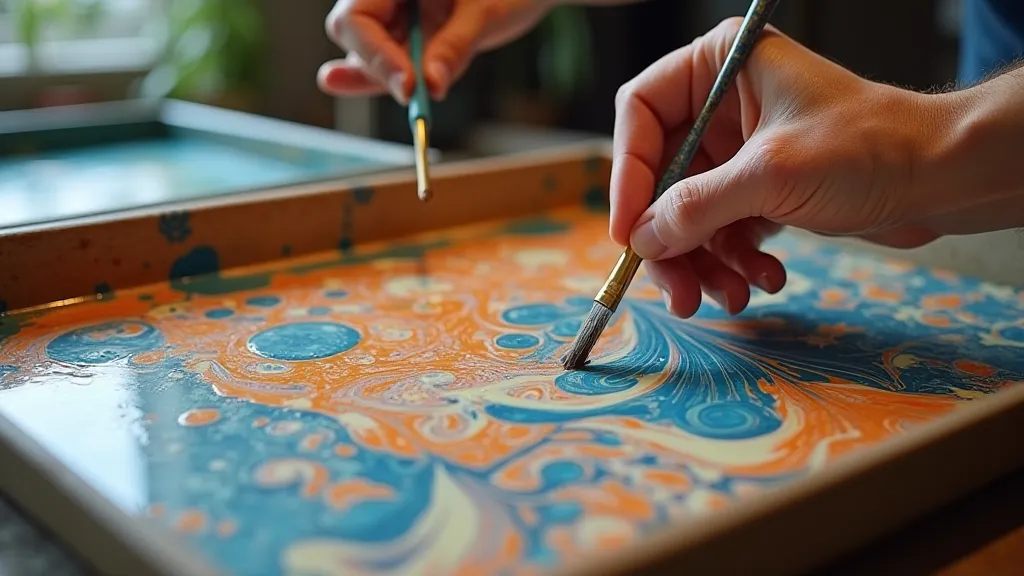
Tips and Troubleshooting
- Gum Ratio: Experiment with the ratio of tragacanth gum to pigment to find the perfect consistency.
- Bath Temperature: The temperature of the bath can affect the behavior of the paint. Warmer baths generally dissolve the paint faster.
- Paper Sizing: Ensure your paper is adequately sized. A simple gelatin size can be applied if needed.
- Color Bleeding: If colors bleed excessively, your gum ratio may be too low, or your bath may be too warm.
- Muddy Patterns: This can be caused by unsized paper or excessive color mixing.
Beyond the Basics: Exploring Creative Possibilities
Once you're comfortable with the basic process, there's a world of creative possibilities to explore within Ekri marbling:
- Motif Creation: Use tools like combs, stencils, or stamps to create patterns within the marbling bath before transferring the paper.
- Limited Palette: Work with a small number of colors to create a more harmonious and controlled aesthetic.
- Layering Techniques: Try layering multiple sheets of marbled paper to create unique textures and effects.
- Combining with Other Crafts: Incorporate your marbled paper into other craft projects, such as bookbinding, scrapbooking, or card making.
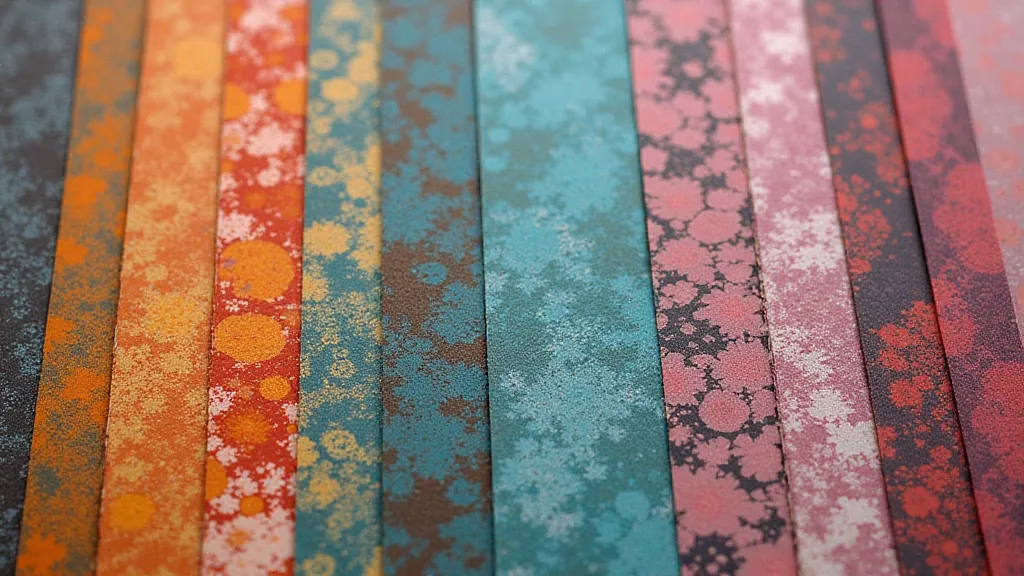
Conclusion
Ekri paper marbling is a rewarding and captivating art form that offers a unique blend of technique, creativity, and cultural heritage. With a little practice and experimentation, you can unlock the secrets of this Turkish delight and create stunning, one-of-a-kind marbled papers.
